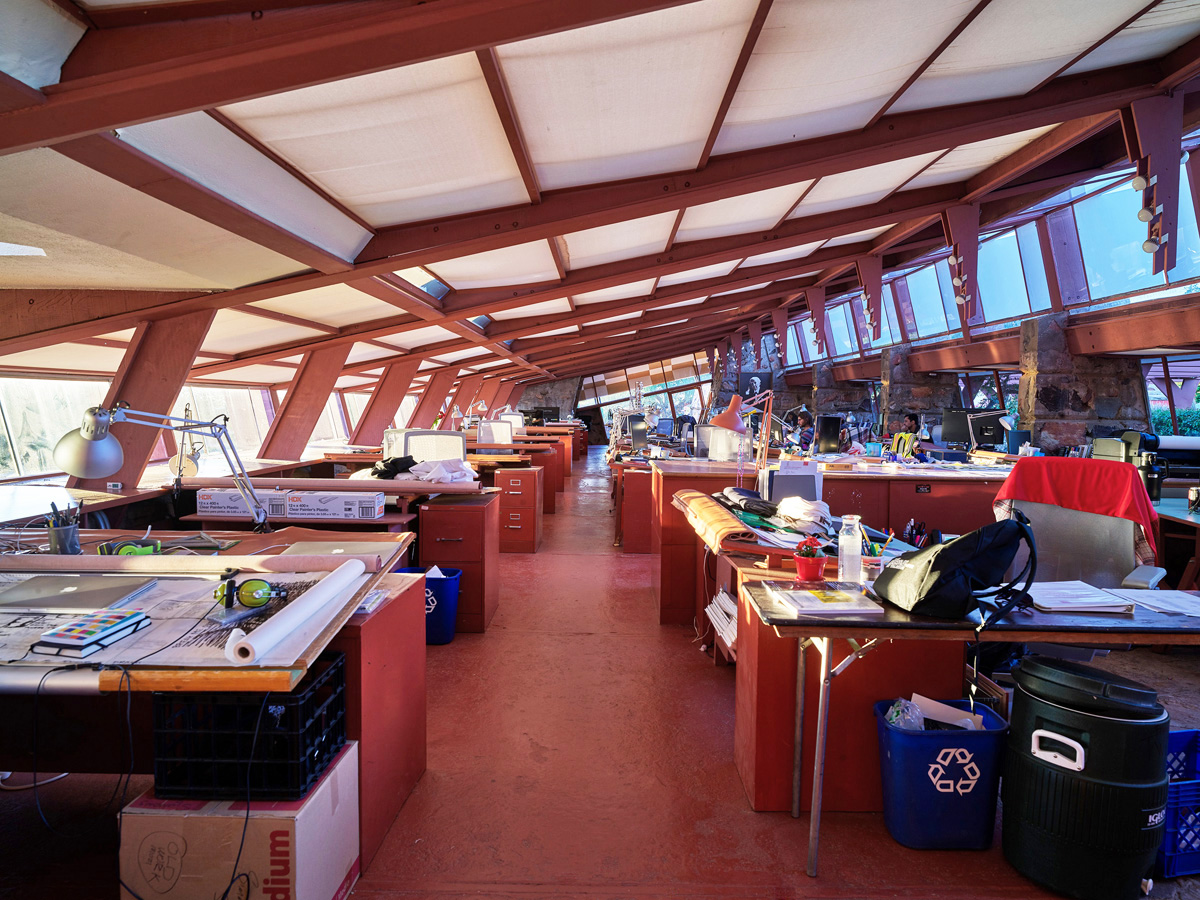Erosion of a Legend?
 |
|
|
Frank Lloyd Wright's legacy is as deep and broad as any architect, possibly any American, who ever lived. That heritage took a sizeable hit recently though, as money woes clashed with the desire to best facilitate careers of other modernists at his trailblazing architectural school.
"I'm not surprised, but it definitely is sad," architect and Wright historian Alan Hess told us following the announcement in late January of the closure of the School of Architecture at Taliesin (SOAT).
In nationwide reporting of the controversial decision, which is scheduled to take effect in June, Hess is joined by numerous experts in the field mourning what could have sustained the 88-year-old school.
 |
"It's all looking at what is in the best interests of Frank Lloyd Wright's legacy," said businessman and attorney Stuart Graff, speaking to Sam Lubell of Architectural Digest. Graff is president and CEO since 2016 of the 80-year-old Frank Lloyd Wright Foundation (FLWF), which has owned the Taliesin facilities near Spring Green, Wisconsin, and Scottsdale, Arizona, since Wright's death in 1959.
The Master built Taliesin (1911) as his Spring Green home, then rebuilt it after fires in 1914 and 1925, one of them tragic. He built Taliesin West in Scottsdale as a winter home in 1937, but both were intended from conception as residential enclaves dedicated to Wright's big idea, organic architecture. Both are now USESCO World Heritage sites, the ultimate historic designation.
"Wright himself was not that friendly to big institutions—he always put himself separate from that," said Hess, noting the irony that costs associated with maintaining accreditation standards is basically the problem shutting the school doors.
 |
|
|
Founded in 1932, SOAT has since the 1980s sought and achieved accreditation from numerous academic organizations, primarily to better position its graduates, called ‘fellows,' for employment. An ultimately unfortunate edict by the Higher Learning Commission in 2012 soon led to an agreement to separate FLWF financially from SOAT by 2017.
"Since Aaron Betsky became dean of the school, there was a feeling that there was a viable intellectual direction," Hess said of the current dean, distinguished in his field but apparently not successful enough at fundraising after a promising start in 2015. Hess, the author or co-author of four books about Wright, notes sadly, "It definitely was moving in a positive direction in terms of who was teaching there."
Even more dismayed than architecture buffs around the globe, the 30-odd current students at SOAT are now caught between what the FLWF board sees as lack of "a sustainable business model" and what one former board member said is a responsibility "in their best interest to make this work."
 |
|
|




